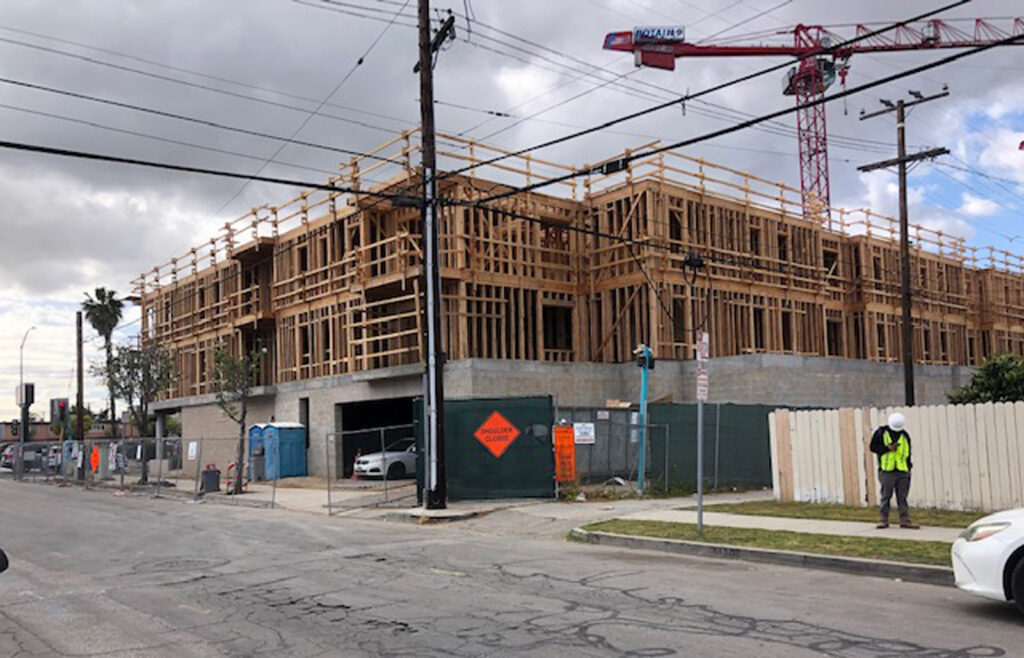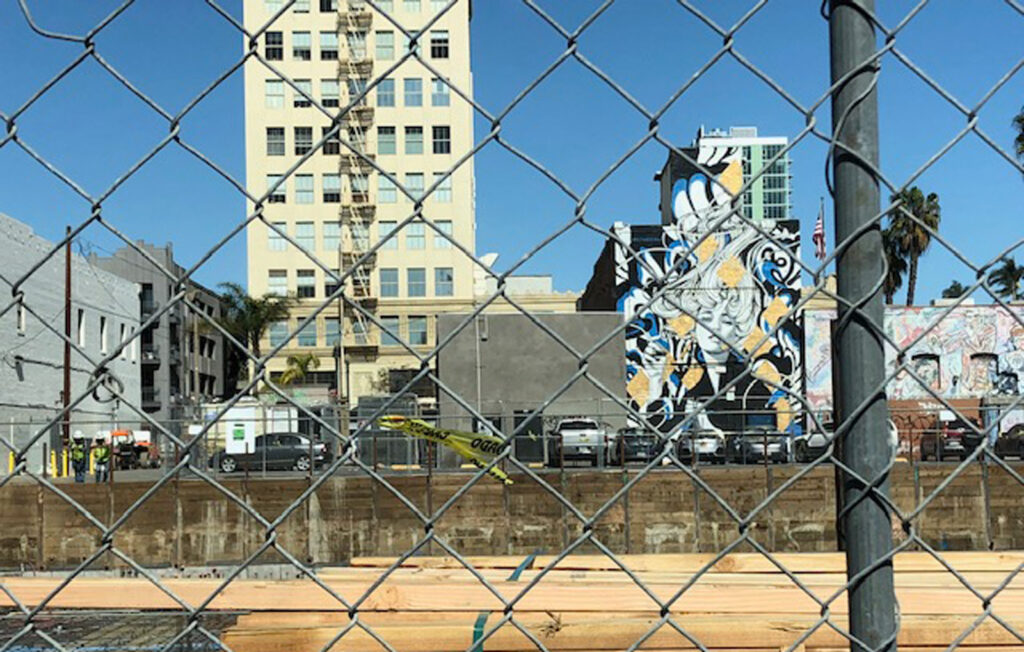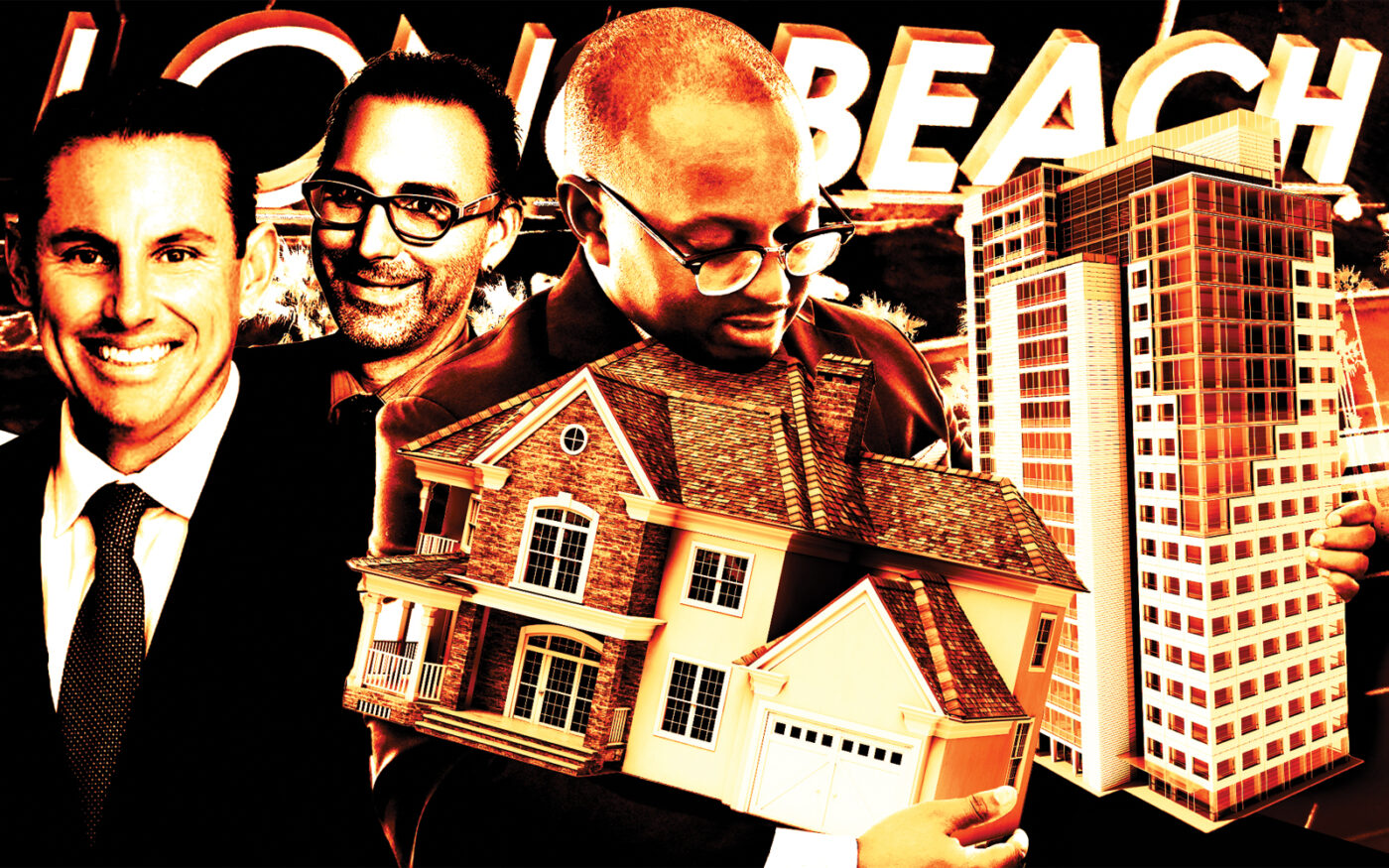In July 2019, Long Beach opened a new City Hall. The building is part of the city’s 22-acre, $520 million Civic Center campus — intended as a pedestrian-friendly new downtown centerpiece — and features a gleaming floor-to-ceiling glass facade, rooftop solar panels and rainwater capture system.
It also has a space, on the light-filled second floor, that resembles a more pleasant DMV, where applicants fill out forms at neat wooden tables and shuffle among 22 kiosks to meet with city representatives. It’s Long Beach’s one-stop Development Permit Center, where on a recent weekday morning the mood was calm.
“You ought to see that thing when it’s full-on running — it can be a zoo!” said Gary Hawken, the city’s building inspections officer.
Hawken previously worked Window 13. “It was a blast working with people,” he recalled. “They come in in a real bad mood and they’re scared, because they gotta deal with the government — it’s like, ‘Hey man, welcome to window 13, man! My window’s dope!’… I made them feel more at ease.”
The attitude is telling. California’s housing shortage is a full-on crisis, with estimates putting the deficit at more than one million homes. And despite an emphatic pro-development turn at the state level, most cities are still failing to build enough — or in some cases, any — housing.
Wealthy or libertarian-leaning towns such as Atherton and Huntington Beach have embraced NIMBY battles against state authority. San Francisco and San Jose struggle with limited land and high costs. The City of L.A. — which recently adopted a plan to accommodate 450,000 more units — has long been hamstrung by a slow entitlements and permitting process.
But for years something very different has been unfolding in Long Beach: a genuine multifamily development bonanza that’s brought dozens of new projects, including some that rank among the city’s tallest buildings. In the past decade, the city has approved more than 5,000 units in its downtown area alone.
“We are in a boom,” said Christopher Koontz, the city’s development director. “But in some ways that makes it sound accidental. It’s not accidental. It’s very specifically by design.”
Weeks, not months
Long Beach wasn’t always sprouting shiny new apartment complexes. The port city at the southern edge of L.A. County has around 450,000 residents, making it the seventh-largest city in California. But it’s usually overshadowed by its larger, famous neighbor to the north — Downtown L.A. and the affluent Westside are both about 25 miles away. L.A. has always commanded more attention, more demand, higher rents and more interest from developers.
A turning point came around 2010, when city leaders coalesced around a comprehensive planning blueprint that aimed to modernize and densify the city’s faded waterfront downtown.
“When you think about the great cities throughout the country, they have great visions,” as one city official put it. “And they stay the course and execute, right?”
“We are in a boom. But in some ways that makes it sound accidental. It’s not accidental.”
At the time the downtown overhaul also attracted plenty of criticism — one affordable-housing advocate warned of “24,000 residents in great risk of displacement” — but when it passed in early 2012 the Long Beach Downtown Plan amounted to an invitation to developers. The framework covered about 800 acres, and provided for increased density and height limits. It also streamlined approvals and removed certain environmental requirements, which are notorious for stalling California projects.
It worked. Within a couple years, the city had approved adaptive reuse projects at some of its most famous addresses: The historic Ocean Center Building, a faded 1929 Spanish Revival structure, was on its way to new life as a modern residential complex; and the faded Security Pacific National Bank Building, an iconic 1924 Beaux-Arts building, was set to be transformed by David Takacs with 118 condos.
More real estate players came, including Orange County-based Waterford Property Company, which started buying and renovating buildings in the city in 2015.
“Development in California is so difficult,” said Sean Rawson, the firm’s co-founder. “We like to do multiple projects in certain cities — Long Beach is just one of those cities.”
Waterford was drawn to Long Beach for a number of reasons, Rawson added. It’s accessible to both Orange County and L.A. It has a strong economy, led by an emerging aerospace industry, which has also helped make it popular with young professionals.
But a major factor was the city’s clear, developer-friendly zoning and efficient approvals and permitting processes, where officials emphasize their willingness to meet with developers before projects are submitted and staff are trained to handle all aspects of a review.

“You’ll get through our planning process in six to seven months,” said development director Koontz. “You’ll get your first building corrections in six weeks.”
Compare that to L.A., where multifamily approvals took an average of more than 18 months between 2010 and 2022, according to the Los Angeles Business Council.
Waterford has become Long Beach’s biggest developer, producing around 1,200 multifamily units across nearly a dozen projects. In September, the firm unveiled plans for its most ambitious project in the city yet: Mosaic, a redevelopment of the shuttered downtown City Place mall into a three-building, 900-unit mixed-use project.
Waterford submitted its application in early 2022. It got the nod from the city’s planning commission about a year later, and from the city council in April.
“In L.A. County,” Rawson said, “I would tell you that Long Beach is kind of a shining example.”
Up and around
On a clear day, the view from the roof of Shoreline Gateway is spectacular. At 35 stories, the 315-unit luxury apartment complex, developed by Ledcor and Anderson Pacific, is now the city’s tallest building, offering a rooftop vista of not only the Pacific Ocean and Catalina Island but the city’s beachfront and enormous port.
Shoreline Gateway took Long Beach’s tallest building title from an office tower called One World Trade Center, which went up in 1989. But it nearly lost it to a Trammell Crow Residential project that was slated for 40 stories before the Dallas-based developer scaled down its height. That project, called West Gateway, will still be massive, however, consisting of six buildings housing 756 units.
Both are part of a slew of projects that are giving shape to something like a new city. A five-minute drive inland from Westside Gateway, on Pine Avenue, the city’s main drag, there’s Volta on Pine, a 271-unit complex that opened in 2021 between a candy store and a barber shop. On nearby Broadway, there’s the seven-story, 222-unit AMLI Park; over on 4th Street is the artsy, 49-unit Linden.
More are under construction, including the 97-unit Locust and a 77-unit supportive housing building called 26 Point 2. Drive by the former City Hall building, a 1970s-era brutalist structure, and you’ll now see a massive hole. It’s the future home of a two-building, 580-unit apartment complex — part of the same civic center complex, which is all being built through an ambitious public-private development model.
“This sets a new standard,” Jeffrey Fullerton, a project director for Plenary, the lead developer, told the L.A. Times in 2018, “for elected officials to think creatively and take risks.”

The city’s pro-growth push has not taken a straight line. In 2018, after heated opposition from some community groups, Long Beach scaled back the upzoning in its Land Use Element update, allowing for denser development in a smaller area than officials had pushed for. The market turn has also brought difficulties, including for Plenary: At one point, the developers reversed course and listed the project, only for their buyer to pull out. In February, the city ended up securing nearly $500 million in bond financing to revamp the project.
But even after greenlighting thousands of downtown-area units, officials are still advocating for more and easier construction. Soon after taking office in December, the city’s new mayor, Rex Richardson, highlighted a plan to partner with educational institutions to build affordable units. In April, the city unveiled its new pre-approved ADU program. In May, City Council, hoping to spread development beyond downtown, approved new zoning for higher-density corridors on the city’s working-class west side and began working on a Downtown Plan update that will focus on more affordable construction.
The question now is whether, and for how long, the boom will continue, especially in the face of a down market. In the long term, at least, developers are optimistic: Long Beach is not immune to macro forces, they say, but its recent growth has already helped create a more viable, lively city, which in turn generates more demand. L.A. County continues to experience both a strong economy and a housing shortage. The 2028 Olympics, which will partly be held in the city, offer another catalyst.
And the city has been rising even as many developers grow increasingly sour on Los Angeles proper, especially if Measure ULA, the industry-hated transfer tax, is upheld in court.
“The question is not, ‘Would you invest in Los Angeles?’” the developer Richard Weintraub said earlier this year. “I would say, ‘Why would I invest in Los Angeles when I have other options?’”
An hour to the south, Long Beach is waiting.

